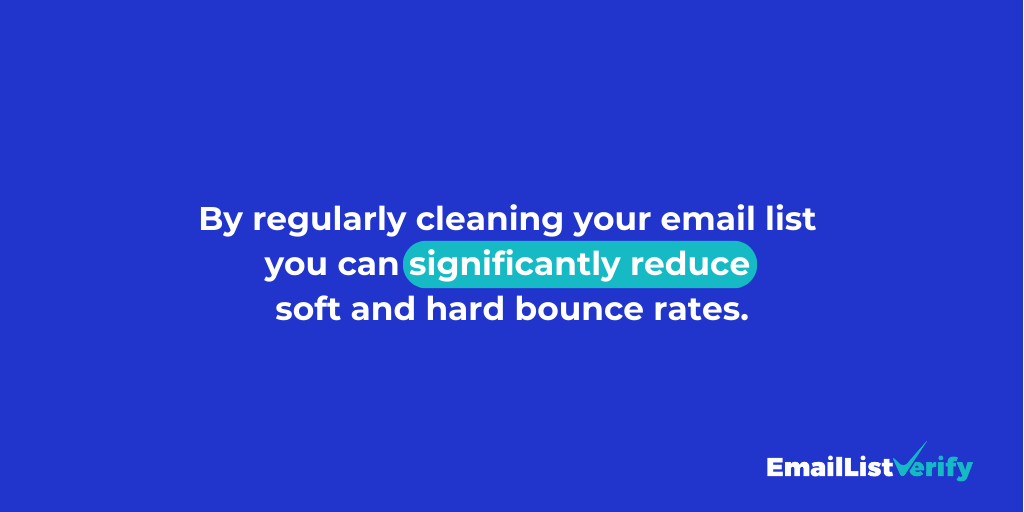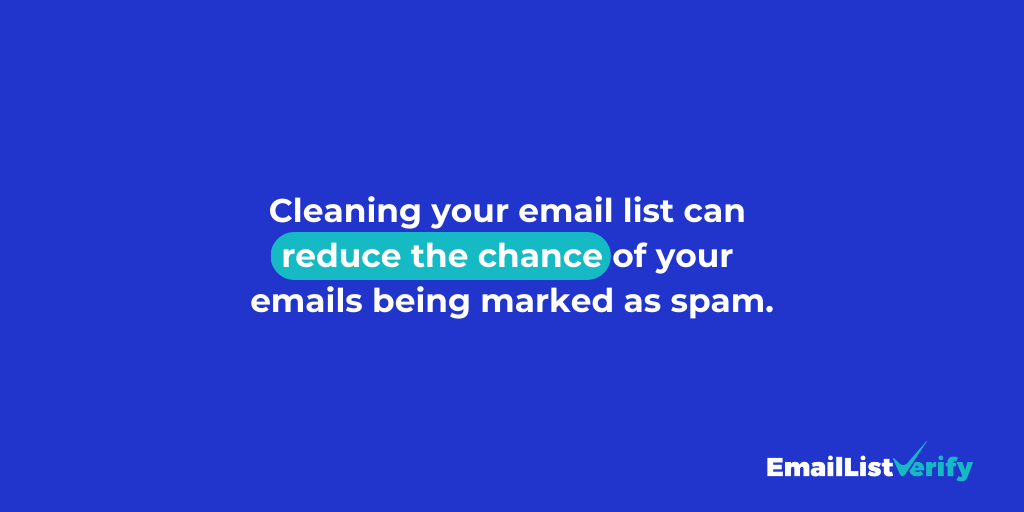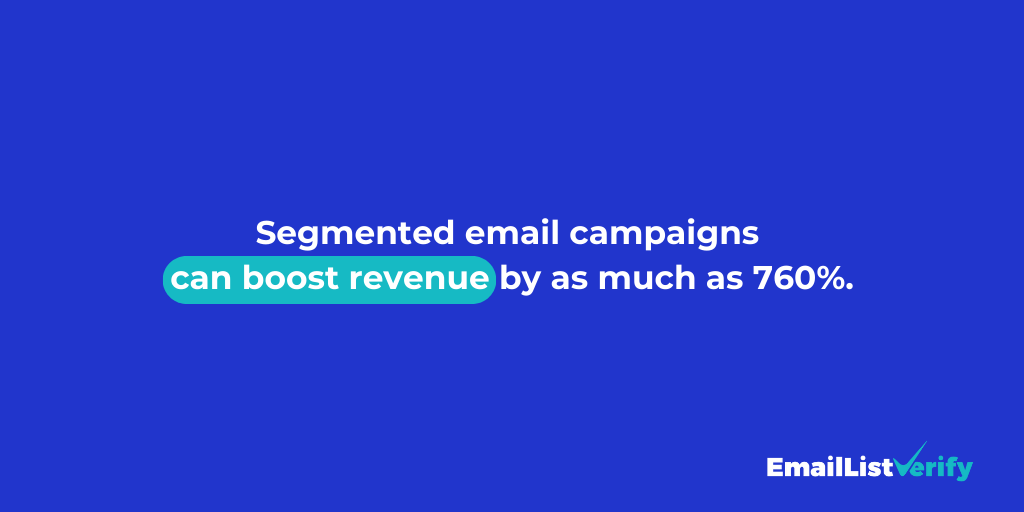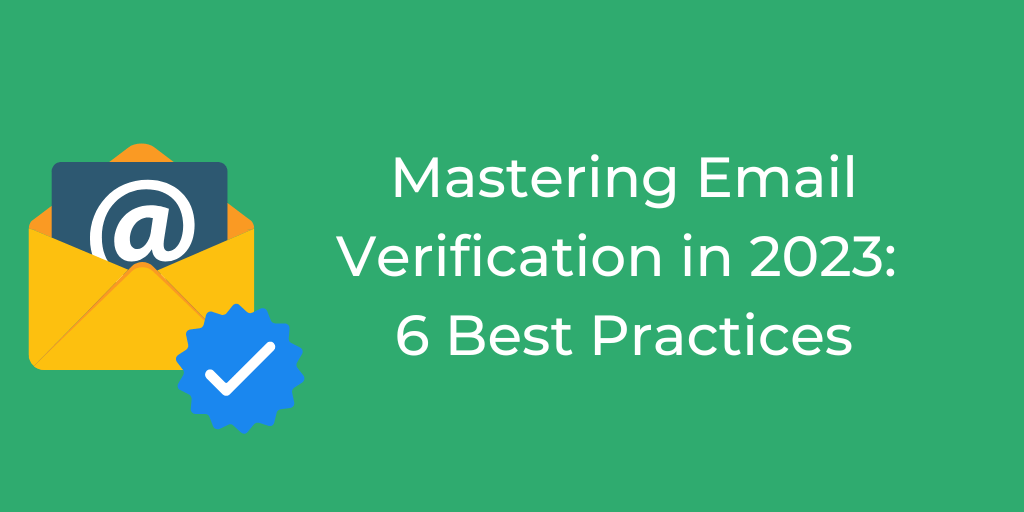
Quick links
Email remains an essential channel for businesses to connect with their audience — but the effectiveness of email marketing campaigns is only as good as the quality of the email list they are sent to.
Enter email list cleaning, an essential component of successful email marketing strategies. In this article, we’ll explore the ins and outs of this essential technique and why it plays a crucial role in your email marketing success.
What is email list cleaning?
Email list cleaning, often referred to as list hygiene or list scrubbing, is the meticulous process of removing invalid, inactive, or irrelevant email addresses from your subscriber list.
It’s the digital equivalent of decluttering your workspace, ensuring that your email campaigns reach the right inboxes and generate meaningful engagement.
The quality of your email list can make or break your campaign’s success — and a clean list not only improves your deliverability rates but also safeguards your sender reputation, which is a critical factor in email marketing effectiveness.
Consider these eye-opening statistics: Studies show that email marketing boasts an impressive return on investment (ROI) of $38 for every dollar spent.
Still, a significant number of email addresses in marketers’ lists contain typos, syntax errors, or inaccuracies — and these mistakes can result in emails bouncing or being marked as spam, significantly affecting the potential ROI.
Email list cleaning is not just about weeding out inactive subscribers, it’s a proactive strategy to ensure your messages reach the right people and drive engagement.
Why is it important to clean your email lists?
Maintaining a pristine email list is not a trivial task but rather an essential practice in the world of email marketing. As we look deeper into the importance of email list cleaning, we’ll explore the concrete benefits that come with this practice.
Lower bounce rate
One of the immediate benefits of email list cleaning is a lower bounce rate. Bounces occur when your emails cannot be delivered to the intended recipients. There are two types of bounces: “soft” and “hard.”
A soft bounce typically occurs due to temporary issues like a full inbox, while a hard bounce is permanent, often caused by invalid or non-existent email addresses.
Data shows that the average bounce rate for emails is around 0.92% for soft bounces and 0.54% for hard bounces.

Improved sender reputation
Your sender reputation is a crucial factor in email deliverability.
Internet service providers (ISPs) use sender reputation to determine whether your emails should be delivered to the inbox or flagged as spam.
A clean email list with engaged subscribers signals to ISPs that you are a legitimate sender, leading to a better sender reputation.
Data shows that emails sent by senders with a higher sender reputation score were 50% more likely to reach the inbox. By keeping your list free of inactive and unengaged contacts, you can boost your sender reputation and increase the chances of your emails reaching your audience.
Higher email deliverability
Email deliverability is the measure of how successfully your emails make it into recipients’ inboxes.
It directly affects the effectiveness of your email marketing campaigns.
Cleaning your email list ensures that your messages are more likely to bypass spam filters and arrive where they belong, resulting in higher email deliverability rates.
Increased engagement
Engagement is the lifeblood of email marketing. When you clean your email list, you remove unengaged subscribers who no longer open or interact with your emails.
This action not only improves the quality of your list but also increases the engagement rate of your campaigns.
During a study, segmented email campaigns with engagement-based targeting achieved a 74.53% higher open rate and a 75.53% higher click-through rate than non-segmented campaigns.
By focusing your efforts on engaged subscribers, you can create more personalized and effective email campaigns, resulting in increased engagement.
Fewer spam complaints
Spam complaints can be very damaging to your email marketing efforts. When recipients mark your emails as spam, it negatively impacts your sender reputation and can lead to your emails being blocked or sent to the spam folder.
A clean email list helps reduce spam complaints by ensuring that your emails are relevant to your subscribers and that you are sending them to willing recipients.

Data shows that 56.5% of all emails were spam in 2022, but by practicing email list cleaning, you can significantly lower the risk of your emails being categorized as spam and maintain a positive sender reputation.
Reduced costs
Maintaining a large and unengaged email list can be costly.
Many email marketing platforms charge based on the number of subscribers you have, so a bloated list can lead to unnecessary expenses.
By regularly cleaning your list and removing inactive contacts, you not only save on subscription costs but also improve the ROI of your email marketing efforts.
Reducing costs through list cleaning allows you to allocate resources more efficiently and achieve a higher return on investment.
How often should you clean your email lists?
Cleaning your email lists is crucial, but the frequency of this practice can vary depending on several factors. Let’s take a look at what you need to keep in mind when it comes to email list cleaning frequency.
Regular maintenance
Regular maintenance is key to maintaining a healthy email list.
A general rule of thumb is to perform a comprehensive email list cleaning at least once every three to six months.
This frequency allows you to identify and remove inactive subscribers, invalid email addresses, and other issues that can accumulate over time. It also helps ensure that your list stays up-to-date and effective in delivering your messages to engaged recipients.
After major campaigns
It’s also a good idea to clean your list after running significant email marketing campaigns, such as product launches or promotions. These campaigns may attract new subscribers or lead to changes in subscriber behavior.
Cleaning your list after major campaigns helps you identify any unsubscribers, update contact information, and maintain list accuracy.
It’s an opportunity to remove subscribers who are no longer interested or engaged with your content.
Based on engagement metrics
Another approach to determining the timing of email list cleaning is to monitor engagement metrics.
If you notice a significant drop in open rates, click-through rates, or other key engagement indicators, it’s a signal that your list may need attention.
Consider cleaning your list when engagement metrics show a decline, as this can help re-engage subscribers or remove unresponsive contacts.
Seasonal or industry-specific
For some businesses, the need for email list cleaning may be influenced by seasonal factors or industry-specific trends.
For example, e-commerce companies may experience fluctuations in subscriber behavior during holiday seasons, requiring more frequent list cleaning. Similarly, industries with rapidly changing customer bases or preferences may benefit from more frequent list maintenance.
Ultimately, the frequency of email list cleaning should align with your specific goals, audience, and email marketing strategy.
Regularly assessing the health of your list and adjusting your cleaning schedule accordingly will help you maintain an efficient and effective email marketing program.
Email list cleaning tactics
When it’s time to clean your email lists to maintain the health and effectiveness of your email marketing campaigns, there are several strategies you can use.
Segment your email lists
Segmentation is a powerful tool in email list cleaning.
By dividing your subscribers into specific groups based on their interests, behavior, or demographics, you can send more targeted and relevant content.
This not only boosts engagement but also helps identify and remove unengaged subscribers.

Regularly reviewing and adjusting your segments allows you to tailor your content to the right audience and keep your list fresh.
Filter out inactive subscribers
Inactive subscribers – those who haven’t engaged with your emails for an extended period – can negatively impact your sender reputation and drag down your email campaign metrics.
To address this, set criteria for identifying inactive subscribers based on factors like email opens and click-through rates.
Remove or re-engage these subscribers with a reactivation campaign to ensure that your list only contains contacts genuinely interested in your content.
Send out a re-opt-in campaign
A re-opt-in campaign is an effective way to confirm the interest and engagement of your subscribers.
It involves sending a targeted email to your list, asking subscribers to re-confirm their subscription.
Those who don’t respond or opt out are automatically removed from your list. This tactic not only cleans your list but also ensures that you maintain a highly engaged and interested audience.
Offer an unsubscribe button
While it may seem counterintuitive, making it easy for subscribers to unsubscribe is a crucial part of email list cleaning.
Providing a clear and visible unsubscribe button allows disinterested or unengaged subscribers to opt out gracefully.
It’s better to have a smaller, more engaged list than a larger one filled with disinterested contacts. In fact, studies have shown that emails with visible unsubscribe options have higher open rates and lower spam complaints.
Identify reasons for bounces
Bounced emails can harm your sender’s reputation and email deliverability. To address this, closely monitor bounce rates and categorize them as either “soft” or “hard” bounces.
Soft bounces may indicate temporary issues, while hard bounces are typically associated with invalid or non-existent email addresses.
Identifying the reasons behind bounces allows you to take appropriate action, such as removing invalid addresses and re-engaging soft bounces.
How to clean up your email list?
When it comes to cleaning up your email list, leveraging the right tools can significantly streamline the process and enhance its effectiveness.
A great place to start is with EmailListVerify, which offers a user-friendly platform for assessing your list and identifying problematic email addresses.
EmailListVerify checks and removes all emails with invalid, inactive, parked domains or invalid accounts. It also identifies temporary emails, provides domain & SMTP validation, and helps protect your domain reputation score.
Best practices for email list cleaning
Maintaining a healthy email list is an essential part of successful email marketing, and proper cleaning is key to achieving this goal.
Keep a good email list hygiene
Email list hygiene is not just a one-time effort but an ongoing practice.
Regularly monitor and clean your list to remove invalid, outdated, or unengaged subscribers.
Avoid purchasing email lists, as these often contain low-quality or outdated contacts that can harm your sender reputation.
Implement double opt-ins
Implementing a double opt-in process is a proactive way to ensure that subscribers are genuinely interested in your content.
With double opt-ins, subscribers must confirm their subscription by clicking a verification link sent to their email.
This step filters out casual or accidental sign-ups and helps maintain a high-quality list of engaged contacts.
According to a report by MailChimp, double opt-in lists had better open rates, showing a 72.2% increase in unique opens and a 75.6% increase in total opens.
Understand your audience
A deep understanding of your audience is essential for effective list cleaning.
Start by segmenting your list based on demographics, behavior, and preferences. Then tailor your content to each segment, ensuring that your emails resonate with your subscribers.
Make sure you regularly review and adjust your segments as your audience evolves. By understanding your audience’s needs and preferences, you’ll keep your list engaged and responsive.
Remove inactive subscribers
Inactive subscribers, those who haven’t engaged with your emails for an extended period, can drag down your email campaigns’ performance.
To fix this problem, consider sending re-engagement campaigns to win back these subscribers, but be prepared to remove them if they remain unresponsive. This ensures that your list contains only engaged contacts who are genuinely interested in your content.
By following these best practices, you’ll not only maintain a clean email list but also enhance the efficiency and effectiveness of your email marketing campaigns. A well-maintained list — and one cleaned up regularly using tools like EmailListVerify– is the foundation of successful email marketing.
Join Our Monthly Newsletter
Learn how to improve email deliverability and clean your email lists with and more.


